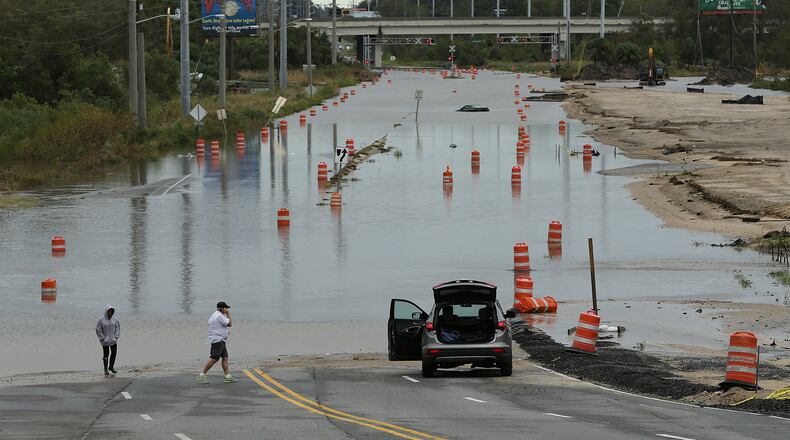A new federal forecast says above-average hurricane activity is likely this summer and fall, with between 14 and 21 named storms expected to develop during the upcoming Atlantic hurricane season.
The forecast issued Tuesday by the National Oceanic and Atmospheric Administration predicts a 65% chance of an above-normal season, a 25% chance of a near-normal season and a 10% chance of a below-normal season.
If the projections prove accurate, it would mark the seventh straight year with above-normal hurricane and tropical storm development. Between 1991 and 2020, an average of 14.4 named storms formed each year in the Atlantic Basin.
The new forecast says that of the named storms projected, six to 10 are expected to turn into hurricanes, and three to six will likely reach major hurricane status with winds of 111 miles per hour or greater.
The federal projections are in line with a separate forecast released in April by researchers at Colorado State University, which predicted 19 named storms would form during the 2022 hurricane season, which stretches from June 1 to the end of November.
Georgia has not had a major hurricane make landfall on its coast in more than 120 years, but several storms have caused severe damage in the state after coming onshore elsewhere. In 2018, Hurricane Michael made landfall on the Florida Panhandle, but maintained its major hurricane status as it pushed into south Georgia, causing billions of dollars in property damage and crop losses.
While the new NOAA forecast did not include site-specific forecasts for hurricane impacts, the Colorado State projections found a 46% chance that at least one hurricane will come near Georgia this season, and a 10% chance that a major hurricane will approach. Both probabilities are considered above average.
NOAA officials said that several factors are driving the forecast for an above-average season, including the continued presence of La Niña conditions. The presence of La Niña tends to reduce wind shear over the Caribbean, making it easier for storms to develop and strengthen.
Warmer than normal sea surface temperatures in the Atlantic Ocean and Caribbean Sea are also likely to fuel storm development, NOAA said.
At the same time, climate change is increasing the destructive potential of storms, scientists say. Global sea levels have risen by between eight and nine inches since 1880, allowing damaging storm surge to reach further inland. Warmer temperatures in the atmosphere also allow storms to hold more water and dump rain at increased rates, raising the risk of flooding.
A major scientific assessment released last year by the Intergovernmental Panel on Climate Change also found that if humans continue to accelerate global warming by emitting greenhouse gases, it is likely that more storms will reach major hurricane status.
About the Author
Keep Reading
The Latest
Featured




